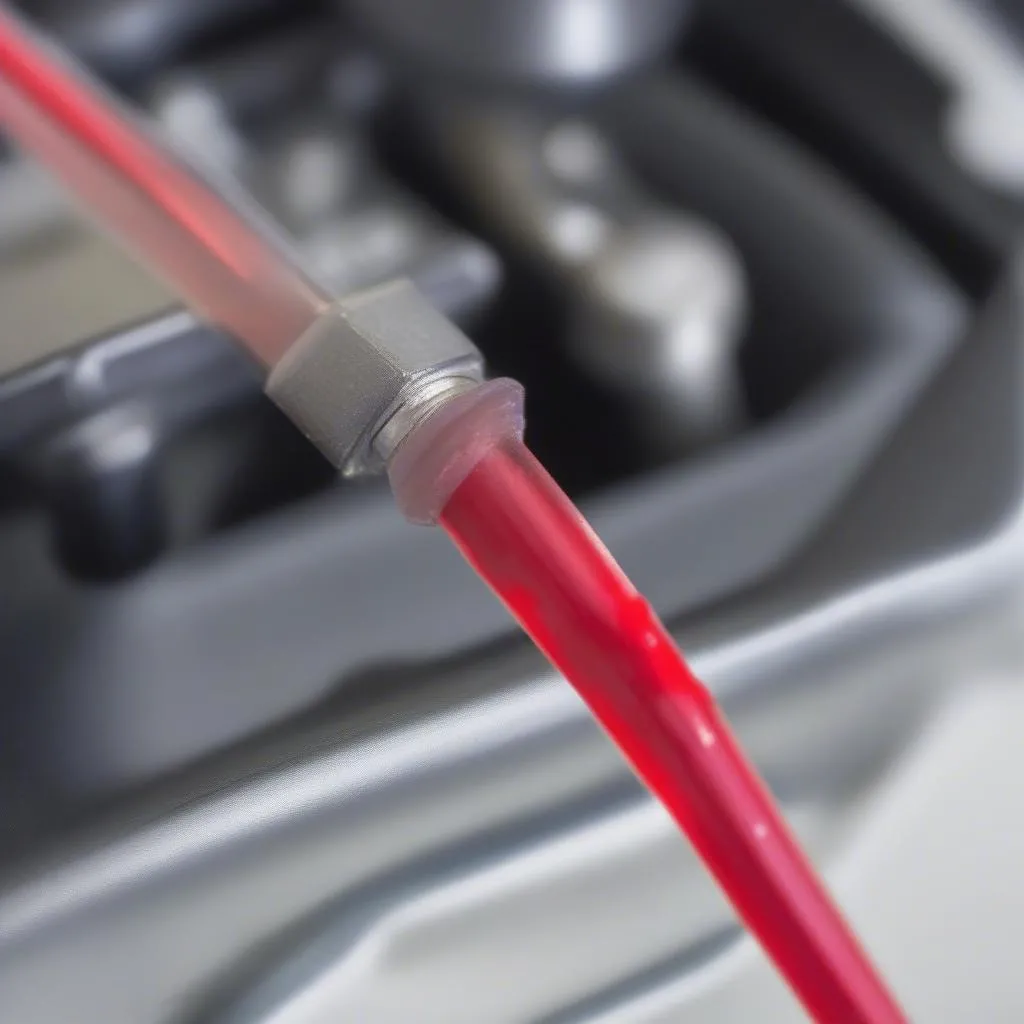Picture this: you’re about to embark on a road trip across Route 66, cruising through California sunshine in your classic Ford Mustang. But wait – your trusty steed feels a little sluggish, and you suspect the transmission might be acting up. You pull into a rest stop somewhere near Needles, California, but there’s no mechanic in sight. What do you do?
Before you panic, remember this: checking your transmission fluid is a surprisingly straightforward process, even without a fancy scan tool. Whether you’re a seasoned mechanic or a DIY enthusiast, this comprehensive guide will walk you through everything you need to know.
Deciphering the Importance of Transmission Fluid Checks
Before we dive into the “how-to”, let’s understand why checking your transmission fluid is crucial. Just like engine oil, transmission fluid is the lifeblood of your car’s gearbox.
From a mechanic’s perspective: Regular transmission fluid checks help identify potential issues early on, preventing costly repairs down the road.
From a technical standpoint: Transmission fluid lubricates moving parts, conditions seals, and helps cool the transmission, ensuring smooth gear changes and optimal performance.
Economically speaking: Neglecting your transmission fluid can lead to premature wear and tear, significantly shortening the lifespan of your transmission and potentially burning a hole in your wallet.
A Step-by-Step Guide to Checking Transmission Fluid Without a Scan Tool
While a scan tool can provide precise readings, you can still get a good idea of your transmission fluid condition without one. Here’s how:
1. Safety First: Always park your car on a level surface and engage the parking brake before proceeding.
2. Locate the Dipstick: Open the hood and locate the transmission fluid dipstick. It’s usually located near the back of the engine, and its handle might be labeled “ATF” (Automatic Transmission Fluid). Refer to your owner’s manual if you have trouble finding it.
3. Check the Fluid: With the engine running and the transmission in park (or neutral for manual transmissions), carefully remove the dipstick. Wipe it clean with a lint-free cloth, reinsert it fully, and then remove it again.
4. Examine the Fluid: The dipstick will have markings indicating the proper fluid level. Ideally, the fluid should be reddish-brown and translucent. If it’s dark, smells burnt, or has a gritty texture, it’s time for a transmission fluid change.
5. Top Off If Necessary: If the fluid level is low, add the recommended transmission fluid (check your owner’s manual for the correct type) through the dipstick tube. Add a small amount at a time, rechecking the level frequently to avoid overfilling.
Important Note: This guide is for general information purposes only. Consult your vehicle’s owner’s manual for specific instructions and safety precautions.
Common Questions about Checking Transmission Fluid
Q: Can I check the transmission fluid with the engine off?
A: While some manufacturers recommend checking transmission fluid with the engine off, it’s generally best to do it while the engine is running and the transmission is in park or neutral. This allows for a more accurate reading as the fluid is properly circulated and warmed up.
Q: What happens if I accidentally overfill the transmission fluid?
A: Overfilling the transmission fluid can cause foaming and aeration, which can lead to shifting problems and potential damage. If you suspect you’ve overfilled the transmission fluid, it’s best to have a mechanic drain and refill it to the correct level.
Q: How often should I check my transmission fluid?
A: It’s generally recommended to check your transmission fluid at least once a month, or more frequently if you tow heavy loads or drive in extreme conditions.
Exploring Related Transmission Queries
Here are some other common questions car owners often have about transmissions:
- Can a scan tool check PIL pressure?
- What live data can a high-quality auto scan tool see?
- What is a transmission reader?
You can find answers to these questions and more on our website, DiagXCar, your one-stop resource for all things automotive diagnostics. We offer in-depth articles, expert advice, and reviews of the latest diagnostic tools to help you keep your car running smoothly.
Need Help with Your Diagnostics Tools?
At DiagXCar, we understand that dealing with car troubles can be stressful. That’s why we offer 24/7 support for all your diagnostic tool needs. Whether you’re having trouble installing software or need help interpreting scan tool data, our team of expert automotive technicians is here to assist you. Contact us on Whatsapp at +84767531508 for prompt and reliable support.
Keep Your Car Shifting Smoothly
Remember, regular maintenance is key to a healthy and long-lasting transmission. By taking the time to check your transmission fluid regularly and addressing any potential issues promptly, you can ensure a smooth and enjoyable driving experience for miles to come.
We encourage you to share your thoughts and questions in the comments below. And don’t forget to explore our other informative articles on DiagXCar to expand your automotive knowledge!



